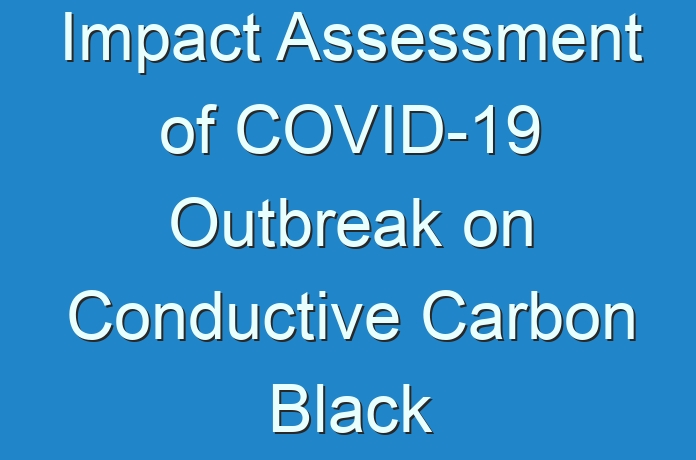
Carbon black can be defined as the commercial form of solid carbon. It is manufactured through a highly controlled process to produce engineered aggregates of carbon particles. These particles generally vary in size, aggregate size, shape, porosity, and surface chemistry. Conductive carbon black is considered as a highly reliable and cost-effective solution for manufacturing of electrical conductive plastic compounds. Usage and selection of carbon black compound depend on three factors: selecting optimal carbon black for the purpose, formulating the compound, and optimizing the compound technique. Electrical conductive carbon black is used in numerous processing methods and final applications such as conductive rubber, conductive plastics, heating sheet, magnetic tape, etc. Conductive carbon black is a particle primarily composed of carbons generally manufactured through the incomplete combustion of oil & gas. It can be manufactured through various processes, the common one being the furnace process, wherein the product is created from incomplete combustion of reactants by introducing coal-based oil or petroleum into a hot gas stream.
Request Brochure:
https://www.transparencymarketresearch.com/sample/sample.php?flag=B&rep_id=43028
A crucial factor affecting the electrical performance of carbon black is its structure. Particle size and porosity play an important in the behavior of electrical conductive compound. After selection of the right carbon black, formulation is the next and important step to ensure that the above factors are executed correctly. On exceeding the loading level, carbon black changes the electrically insulating base polymer into electrically conductive plastic. The decline in electrical volume resistivity due to the increased amount of carbon black can be described using a percolation model. The third and final stage includes optimizing the compound process. In this stage, the processing parameters ensure that the shear forces and process temperatures are at the ideal level. In optimal conditions, carbon black agglomerates are separated into aggregates, which are then dispersed and distributed evenly within the compound. The process is carried out without breaking the structure of the carbon black. Manufacturers of conductive carbon black continuously work on quality control throughout the process and cooperate with the production and quality assurance departments to achieve the perfect outcome.
Enquiry Before Buying:
https://www.transparencymarketresearch.com/sample/sample.php?flag=EB&rep_id=43028
Based on application, the global conductive carbon black market can be classified into plastics, battery, electrodes, paints & coatings, rubber, etc. Conductive carbon black is considered as a pure elemental form of carbon and is one of the top 50 industrial chemicals manufactured globally. Carbon black finds major share as a reinforcing agent in rubber. Conductive carbon black is majorly used in applications for enhancing the physical properties of polymers in order to increase their durability, tensile strength, and resistance to abrasion, friction, and corrosion.
Based on geography, the global conductive carbon black market can be divided into Asia Pacific, Europe, North America, Latin America, and Middle East & Africa. North America and Europe are the major markets for conductive carbon black market, led by the growth of the electronic industry. The conductive carbon black companies in Asia Pacific and Latin America are investing significantly in research and development. The potential growth of plastic and automotive industries in the countries of Asia Pacific is expected to drive the conductive carbon black market in the region.
Major players operating in the global conductive carbon black market are Cabot Corporation, Birla Carbon, Orion Engineered Carbons S.A., Imerys Graphite & Carbon Switzerland SA., AkzoNobel N.V., Tokai Carbon Company Limited, Ampacet Corporation, Phillips Carbon Black Limited, Denka Denki Kagaku Kogyo Kabushiki Kaisha, and Asbury Carbons, Inc. These companies account for a significant share of the conductive carbon black market. Thus, the conductive carbon black market experiences intense competition.
Request Discount:
https://www.transparencymarketresearch.com/sample/sample.php?flag=D&rep_id=43028
This study by TMR is all-encompassing framework of the dynamics of the market. It mainly comprises critical assessment of consumers’ or customers’ journeys, current and emerging avenues, and strategic framework to enable CXOs take effective decisions.
Our key underpinning is the 4-Quadrant Framework EIRS that offers detailed visualization of four elements:
- Customer Experience Maps
- Insights and Tools based on data-driven research
- Actionable Results to meet all the business priorities
- Strategic Frameworks to boost the growth journey
The study strives to evaluate the current and future growth prospects, untapped avenues, factors shaping their revenue potential, and demand and consumption patterns in the global market by breaking it into region-wise assessment.





